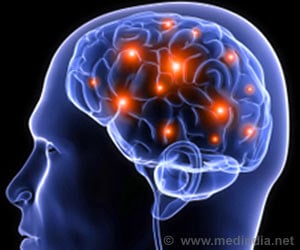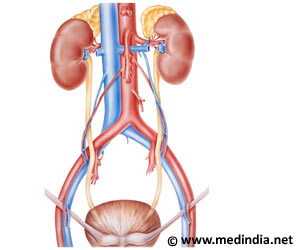- Sleep enables neurons in the hippocampus to “reset,” allowing for better memory retention and learning
- The CA2 region plays a pivotal role in silencing memory circuits during sleep, crucial for memory consolidation
- New research on sleep and memory offers potential treatments for Alzheimer’s, dementia, and post-traumatic stress disorder (PTSD) by targeting specific neuron circuits
One of the primary roles of the human brain is to generate memories—the ability to retain and recall information over time. Memories enable us to recall significant events in our lives, the faces of those we know, and the ability to learn. Neurons are special cells in the brain that assist in producing memories, which are then kept in the hippocampus. A good diet, exercise, meditation, and adequate sleep can all assist in boosting a person’s ability to create memories.
“We have a general understanding that sleep is beneficial for our bodies to rest and for our memory to improve, but we do not yet understand all the details of how this occurs,” said Azahara Oliva, Ph.D., assistant professor in the Department of Neurobiology and Behavior in the College of Arts and Sciences at Cornell University. “Once we start cracking the neural processes that are important for these many different things, we could use that to reverse detrimental conditions, such as memory impairment, during sleep,” she pointed out.
Oliva is the corresponding author of a recent study published in the journal Science that discovered that during sleep, the hippocampus stays “silent” and allows neurons to “reset,” making them accessible to develop new memories the next day, using a mouse model (1).
“We want to see what exactly the brain is doing during sleep that favors or disfavors memory,” Oliva told me. “We [spend] around a third of our lives sleeping, which is a lot of time. Understanding the relationship between sleep and memory can help us address adverse memory problems.”
Advertisement
How do Neurons ‘Reset’ During Sleep?
The researchers identified three major sections of the hippocampus: CA1, CA2, and CA3. Using a mouse model, the researchers showed that while neurons in sections CA1 and CA3 were particularly active during daytime learning, they were “silent” while the mice slept.
“We realized there are other hippocampal states that happen during sleep where everything is silenced,” Oliva said in a press release. “The previously tremendously lively CA1 and CA3 regions became abruptly quiet. It’s a memory reset, which is caused by the middle area, CA2.
The “silencing” of CA1 and CA3 allows neurons to “reset” during sleep.
“During our experience, a few neurons become highly active,” Olivia explained. “The same neurons ‘work hard’ during sleep to encode this event in memory. We discovered that in order for these neurons to imprint their memories, they require breaks or a ‘reset.’ Without these pauses, neurons are unable to form appropriate memories.
Advertisement
Therapy Alternatives for Memory-Related Diseases
Oliva and her team believe that as a result of the study’s findings, they now have some instruments to potentially increase memory. Such solutions could someday help doctors combat memory-related disorders like Alzheimer’s disease.
Furthermore, experts believe that these results may one day allow doctors to delete negative or traumatic memories from patients in order to treat diseases such as post-traumatic stress disorder (PTSD).
“We now know which particular neurons and through which particular neural circuits are responsible for different neural processes, both important for memory, like consolidation and resetting,” according to Oliva. “That will facilitate the specificity that we can gain when treating different types of detrimental memory conditions.”
Regarding the next step in this research, she said, “We want to understand how the brain coordinates high memory demands. What happens when there are multiple experiences? At the end of the day, most of our lives are filled with things we wish to learn and remember.”
Advertisement
Memory Research: Hippocampus is Still a Focus of Interest
After reviewing this study, Manisha Parulekar, M.D., FACP, AGSF, CMD, director of the Division of Geriatrics at Hackensack University Medical Center, co-director of the Center for Memory Loss and Brain Health at Hackensack University Medical Center, and associate professor at Hackensack Meridian School of Medicine in New Jersey, told MNT that it provides insight into how sleep “resets” the brain for new learning, offering a possible explanation for why we need sleep and how it impacts memory storage.
“Understanding the role of the CA2 region in silencing and resetting memory circuits could lead to therapies that enhance memory consolidation and prevent further cognitive decline in patients with dementia and Alzheimer’s disease,” Parulekar told me.
Furthermore, improving sleep quality through therapies such as cognitive-behavioral therapy for insomnia may be critical in controlling these diseases,” she stated. Parulekar stated that it is critical for researchers to continue to discover novel ways in which sleep impacts the brain, since more research is needed to understand individual differences in sleep patterns and brain activity in order to customize these possible medicines.
“Exploring the contributions of other sleep stages and developing noninvasive techniques to modulate brain activity during sleep are also important areas for future investigation,” according to her.
“Translating these findings into clinical trials to test the efficacy of interventions targeting the CA2 circuit or sleep quality in patients with dementia and Alzheimer’s disease is crucial,” Parulekar told reporters. “Developing personalized approaches based on individual sleep patterns and brain activity and conducting studies to evaluate the sustained benefits and potential risks of these interventions are essential next steps.”
References:
- A hippocampal circuit mechanism to balance memory reactivation during sleep
(Lindsay A. Karaba et al. A hippocampal circuit mechanism to balance memory reactivation during sleep.Science385,738-743(2024).DOI:10.1126/science.ado5708)
Source-Medindia



